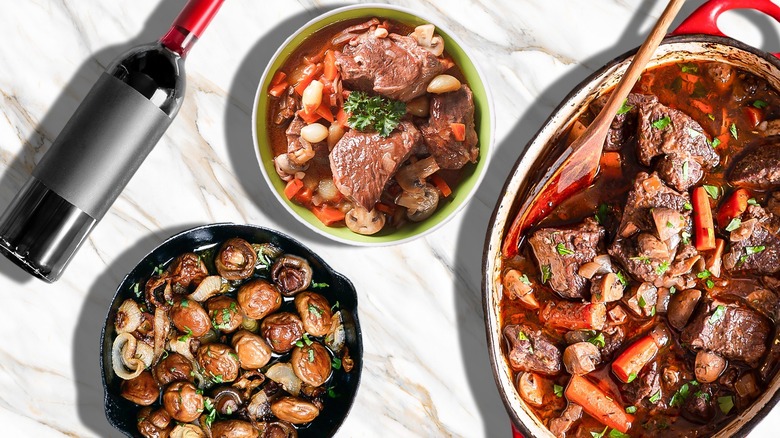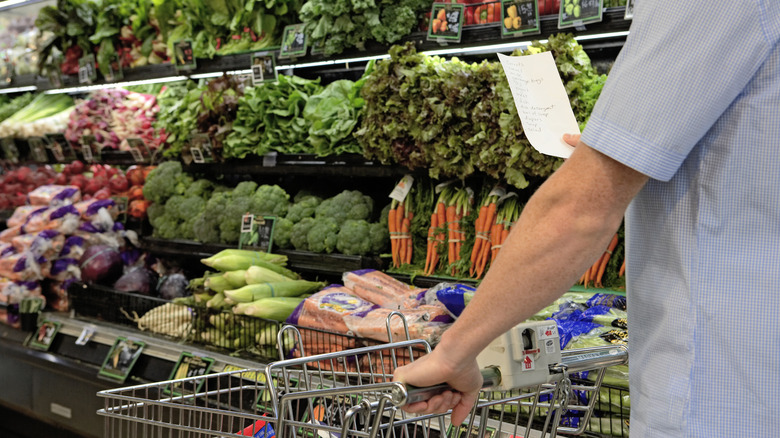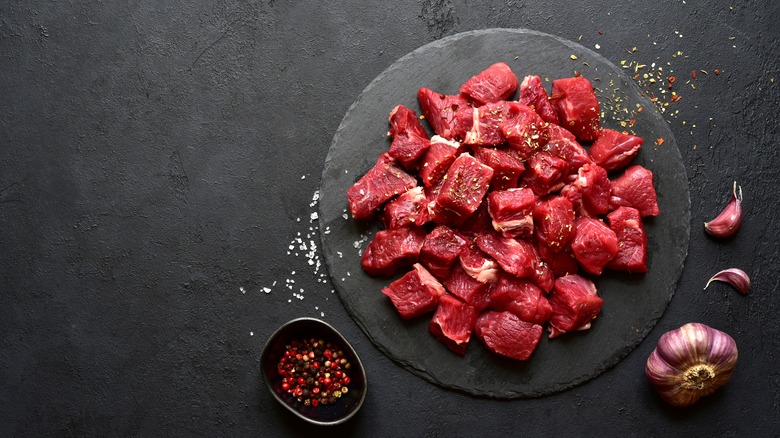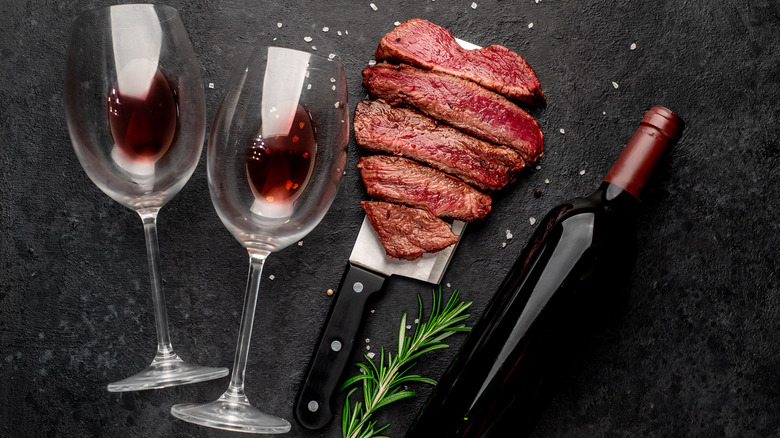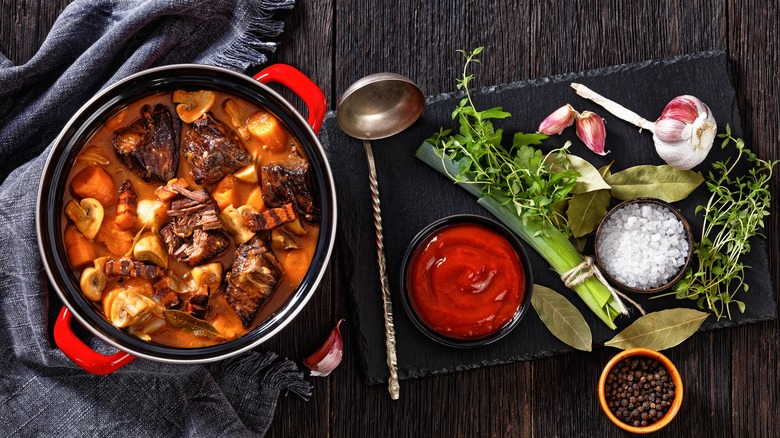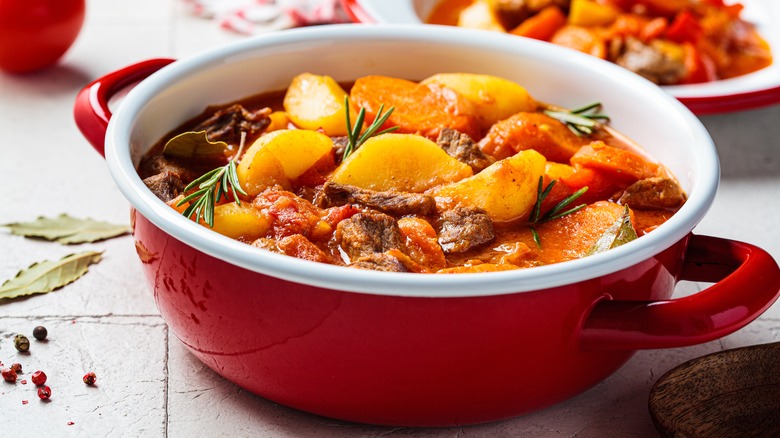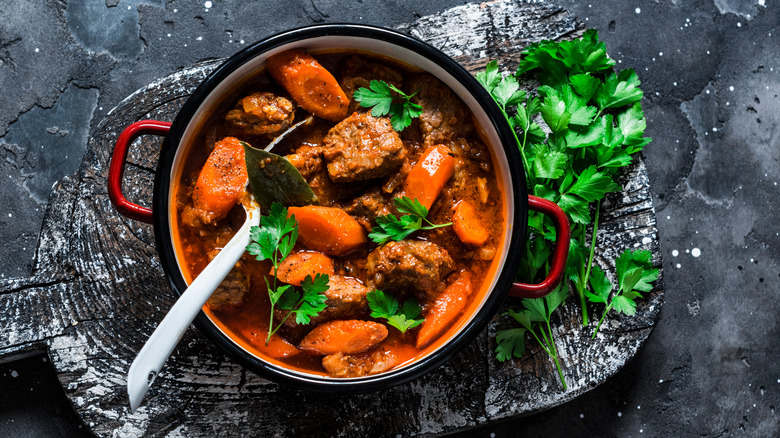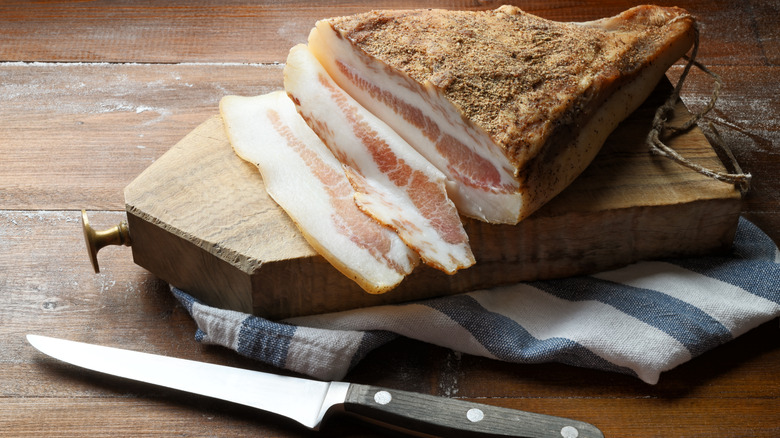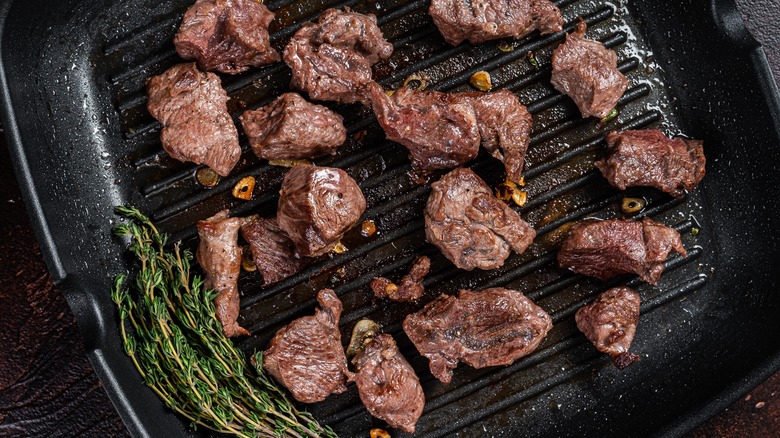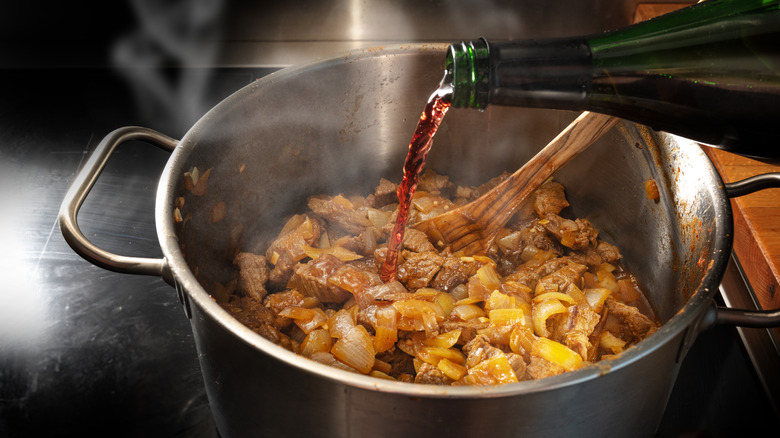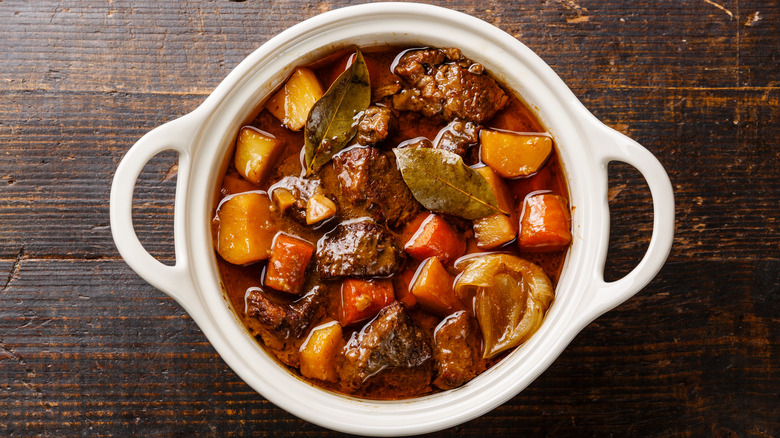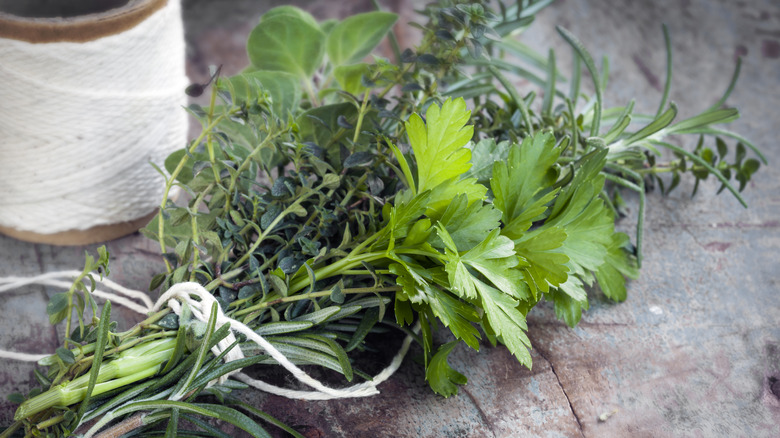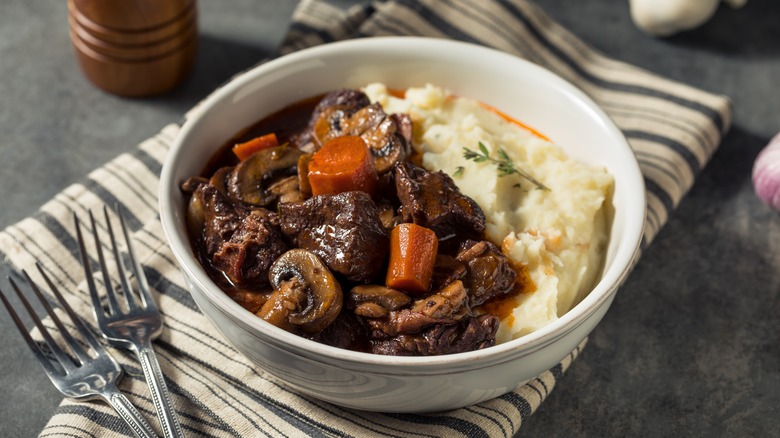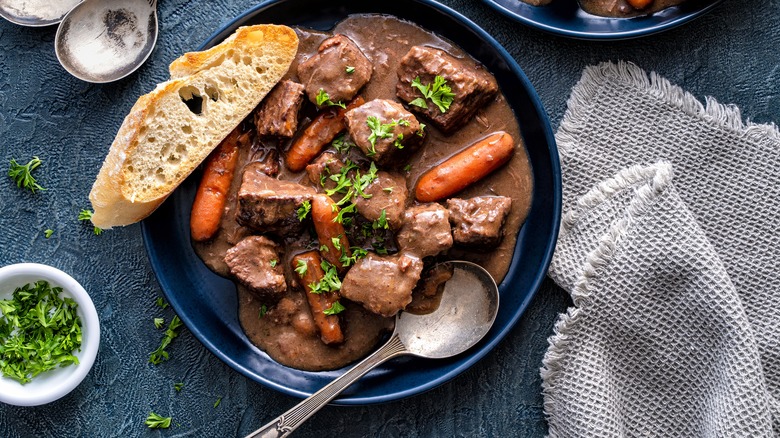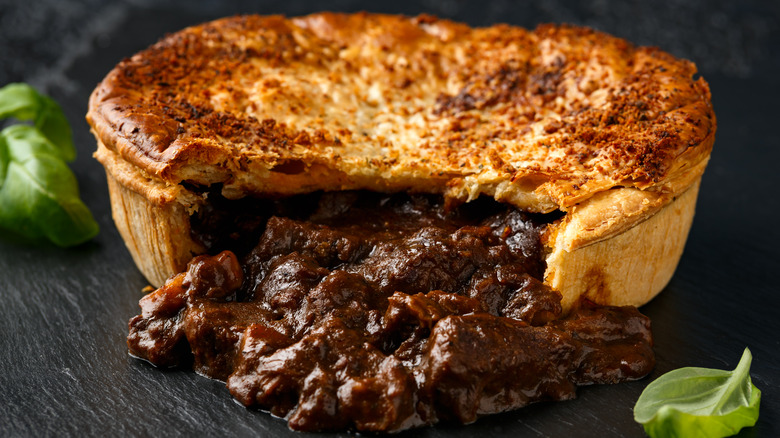15 Tips You Need When Making Beef Bourguignon
The iconic French stew beef bourguignon (aka boeuf bourguignon) may seem simple but the taste is rich and complex. It showcases a most excellent use of the classic combination of wine, beef, a medley of veggies, herbs, and several other ingredients that are then simmered together just long enough to marry all those flavors into one world-class stew. Making beef bourguignon (and making it well) requires more skill, effort, and time than most people might expect.
And just like there are tips you need for making beef stew, so too are there tips and tricks for turning an impressive assortment of ingredients into the ever-delicious, warm-your-belly-in-the-winter kind of dish: beef bourguignon. So, without any further ado, it is time to dive into the ins and outs of one of the best beef dishes you can hope to eat during this cold season — as well as ways of streamlining the cooking process.
Make a shopping list and check it twice
No one prepares beef bourguignon on a whim at home. It requires a carefully cultivated and curated selection of ingredients that even experienced beef bourguignon aficionados make a list for when visiting the grocery store. The best beef bourguignon recipes that you can find online call for more or less the same items on that shopping list: bacon, beef, onion, garlic, flour, cognac, red wine, stock, fresh herbs, celery, butter, mushrooms, carrots, pearl onions, and salt and pepper.
Though these items may seem easy enough to remember, the details are difficult to keep straight once you're standing in a grocery store in aisle 17 with a cart in hand and a recipe sitting in a bookmark bar back at home. So, write out that list and check it twice, because making the perfect beef bourguignon at home means more than throwing together any old beef stew and adding a bit of wine, and the end results (if done right) are divine.
Find the right cut of beef for bourguignon
When it comes to the correct cut of beef for homemade beef bourguignon, you can choose from a few options, each with its own culinary pros and cons. Even among celebrity chefs, the preferences between different cuts of stew beef vary dramatically. For instance, Jacques Pepin prefers to use chuck roast cuts of beef for stews like beef bourguignon. The chuck cut of beef is favored for its affordable price as well as its flexibility in slow-cooking recipes and the way it breaks down its tough texture to become incredibly tender ... sometimes to the point where the term fork-tender becomes an understatement and spoon-tender a more realistic description.
For those able and willing to take a more high-cost approach to selecting the cut of beef for your beef bourguignon, consider a bone-in prime rib roast or short ribs, both of which add delicious bone broth flavor to the dish alongside sumptuous stew meat. So long as the beef cut is well marbled and will break down nicely with a low and slow cooking method, then it will work perfectly in any beef bourguignon.
Use nice wine, and the right kind
Although Anthony Bourdain believed the perfect beef bourguignon and wine pairing doesn't exist, there are still some rules to follow as to which wines to use for beef bourguignon. You wouldn't want to go with a white wine or a rose, for example, nor a sake, a plum wine, or a port. No, the best wine for beef bourguignon is a red Burgundy or any wine made from Pinot Noir grapes. The flavor profile from Pinot Noir grapes, whether used in a red Burgundy, a Pinot Noir, or another red wine, can create an amazing base for your bourguignon.
Whatever wine you choose, the most important thing to note is that you want a red wine that tastes nice and possibly has some notes of fruit, pepper, earth, or other flavors that will complement the dish's assorted components, including the beef, herbs, and so on. And, remember, now is not the time to skimp on the expensive wine. Why? Because beef bourguignon is all about the wine stock and you will taste the flavor profile of the wine in each and every bite.
Mise en place is a must for boeuf bourguignon
Sure, you can assemble a perfectly delicious beef bourguignon without taking the time to mise en place its ingredients but that doesn't mean it's possible to cook this complex dish on the fly without at least one moment of panic. Keeping a calm kitchen and thus a calm mind oftentimes makes or breaks and dish, especially ones as deceptively complex as beef bourguignon. So, any ingredient that needs preparation in some way, whether it be measured out, peeled, chopped, tossed in flour, tied in a knot, twisted, booped, or even bopped, should be taken care of before the pot so much as hits the stove.
By maintaining a well-organized, prepared kitchen, it becomes much easier to remember all the ingredients, integrate them at the right time, and prevent them from burning since there's no possibility of getting otherwise distracted or embroiled in a different task.
Be careful cutting steps
The trap many first-time attempts fall into with a dish like beef bourguignon is in its many, many steps, ingredients, and (at times) seemingly excessive layering of components when, without x, y, or z it would still be a delicious beef stew. This mistake commonly occurs because it is technically correct; beef bourguignon without butter-seared mushrooms, or bacon, or a bacon adjacent addition, will still be a gourmet stew, but it won't be boeuf bourguignon in all its beefy, bourguignon-y glory.
So, if you're going to cut corners like Ina Garten does with her take on Julia Child's beef bourguignon recipe, be sure to do so with discretion as to what shortcuts should and shouldn't be used in the making of your dish.
Use a Dutch oven or cock pot for cooking
One of the many tips and tricks that accomplished home cooks and chefs alike utilize to elevate their meals from good to amazing is the seemingly humble yet expensive and effective Dutch oven and/or crock pot. For anyone wondering about the cost of these cooking implements, expect to spend at least $50 for a basic, bargain crock pot. And don't be surprised to see some name-brand Dutch ovens, like those from Le Creuset, sell for anywhere between $250 to over $700 depending on size, make, and more. Investing in a good crock pot or Dutch oven is well worth the cost considering that most standard pots and pans are unsuited for low-and-slow (and costly) dishes such as beef bourguignon because they lack a solid, thick-enough bottom later to separate the heat of the stove from the food inside.
If left unattended for too long in a thin-bottomed dish, the bottom of your beef bourguignon could burn, which would mean that all the food inside could and most probably would take on a somewhat burnt beef flavor that most would consider unappealing. So, if you plan to make beef bourguignon at home, make sure you have the appropriate cooking equipment to regulate that heat and keep your beef stew tender, unburnt, and unbothered throughout the cooking process.
Use guanciale instead of bacon
Just about every meat-eating person enjoys bacon with a special gusto, but the market offers many other cured pork products. While bacon is great at the right time and in the right place, different cuts and cures such as prosciutto, pancetta, and guanciale are vastly preferable for beef bourguignon. Why? Because bacon has a distinct taste that doesn't blend as well with the stew as its milder counterparts. The best beef bourguignon recipes, for instance, call for guanciale, an ingredient not to be confused with bacon.
Guanciale, for those who don't know, originally comes from Italy. It is a unique ingredient in that it is sourced from not from the pork leg or belly, but from its cheek. This pork product takes advantage of sourcing all the most tender, fatty meat from the cheeks, which renders beautifully into fat and crispy bits that complement beef bourguignon better than any other little piggy possibly could.
And be sure to brown the beef in the pork fat
Why collect perfectly delicious fat, freshly rendered out of all that guanciale if you don't use it to brown off the star of the show: the beef? Especially in a dish as layered, complexly flavored, and festive as beef bourguignon, one must wring all the best qualities out of each and every ingredient.
The reason you want to use the guanciale fat as opposed to other kinds of fat for frying the beef is due to its high amount of flavor and low burning point; if you were to go with butter instead, for instance, it would have great flavor but quickly burn while frying off the beef. And if you were to brown off the beef in vegetable oil instead, it would have a high burning point but no real flavor of its own to add to the beef bourguignon. Since you'll already have pork fat on hand from the guanciale, use it to add to the beef bourguignon's taste. This step actually helps reduce waste as well.
Deglaze with wine and use more than you'd expect
For those fond of the flavor of fond, it should come as no surprise that a good beef bourguignon calls for red wine at deglazing time. Nothing quite compares to the scent of wine sizzling against a hot pan, lifting all those delicious brown bits of beef and onion and pure flavor quite like the wine that will carry this complex amalgamation of ingredients over the finish line and into a taste so sublime ... well, it's obvious how beef bourguignon earned its place in the culinary canon of classic recipes.
Note that this dish requires a lot more wine than most people would feel comfortable with, at least those accustomed to more traditional cooking-with-alcohol practices, which typically call for relatively small amounts that can cook off fast. Beef bourguignon, on the other hand, is more in the realm of measuring out a cup of wine for the cook while pouring the rest of the bottle in for the stew.
Skim a lot of that excess fat
Cooks and chefs love the phrase "Fat is flavor" but this common kitchen supposition only applies up until a certain point of excess is reached. And once that scale tips into the too-much-fat zone, the return on your fat-to-flavor ratio starts to diminish. Beef bourguignon is one dish that can benefit from significant fat skimming, especially since this stew is comprised of fatty pork, fatty beef, and hopefully fatty mashed potatoes and mushrooms as well. In other words, it's possible to overdo it with all those rich, fat-heavy ingredients involved.
For beef bourguignon, the best way to manage the fat content is to skim it off throughout the cooking process. This works because the fat of the guanciale and beef, the two primary fats in the stew itself, will rise to the top of the pot as everything cooks. Once a noticeable layer of unbroken fat covers the surface of your beef bourguignon, then it is officially too fatty and should be skimmed of excess fat with a spoon and moved to a bowl or mason jar to later be thrown away. Avoid washing the fat down the sink, as disposing of it in this manner can lead to clogged plumbing if done frequently.
Use a fresh bouquet garni for flavor
Few ingredients can compare with the simple yet elegant flavor of a fresh bouquet garni in just about anything, especially one such herb bundle that boasts the perfectly balanced flavor profile for whatever blend of aromatics are stashed within its sachet or twine. No matter how many or few herbs are called for in a bouquet garni, its job is to help all the other components of the dish shine. And, when it comes to beef bourguignon, the complementary herbs one can use are nearly endless. That said, the most classic combination of fresh herbs for amping up this fancy French beef stew are rosemary, thyme, and bay laurel leaves.
If anyone wants to add a few dried herbs to complement the fresh ones, consider getting an herbes de Provence blend for that beef bourguignon. This includes the same rosemary, thyme, and bay laurel leaves fresh from the bouquet garni but also boasts an element of dried lavender for a mild floral component that no one will be able to place, but just about everyone will appreciate once they get a taste. Other common fresh herbs to add are parsley, sage, and even oregano.
Make mashed potatoes instead of putting them in the stew
Whether you fry or mash spuds or include them in a stew, they will surely taste great. But beef bourguignon benefits from being dolled up a bit by making sure those potatoes are mashed instead of boiled along with everything else. This is for a few reasons, paramount of which is the clarity of the beef bourguignon itself. Unlike a lot of more rustic renditions of beef stew, which can take — if not even benefit from — the starch release of breaking down potatoes as they boil along with everything else in the pot ... beef bourguignon reaches a peak when that wine-rich broth is smooth and spudless.
The best way to integrate potatoes into beef bourguignon is to prepare a rich and creamy mashed potato and serve it on the side or (even better) as a bowl underneath the boeuf bourguignon. The contrast of savory wine and beef stew spilling over those mashed potatoes delivers a mouthwatering sight and a great culinary delights.
Cook the mushrooms separately and add at the end
For a fabulous, professional-level beef bourguignon, remember one can't-skip ingredient: mushrooms. Not just any old mushrooms tossed into the stew, mind you, but mushrooms prepared with care and worthy to top the entire splendid dish that so many hours and ingredients have already gone into by the time the mushrooms become relevant. So, rather than mixing in some mushrooms at the beginning of the stew along with everything else, top off the finished product with crispy, delicious mushrooms that have been seared separately to perfection. This prevents soggy mushrooms, which can be a bit of a textural nightmare, and also adds an exciting element of gourmet mushrooms garnishing a gourmet beef bourguignon.
For anyone who enjoys fresh, foraged mushrooms, this would be a good time and place to add delicious crispy chanterelles, grilled porcinis, or seared-off oyster mushrooms — whatever exciting fungi you'd like to decorate a delicious beef bourguignon.
Let the stew rest before serving
Few makers of any stew, much less beef bourguignon, adhere to the essential step of letting the food rest. But allowing all those ingredients to settle and meld, even for a short time, can make a world of difference. In the same way you let a roasted chicken or a prime rib roast rest on the counter for at least 10 or 15 minutes (to retain juiciness), so too should you allow beef bourguignon and any other stew to sit.
Plus, letting your beef bourguignon sit for a while will no doubt prevent scorched palates since the dish smells too good to resist, even when it's obviously scaldingly hot. So, keep all those soon-to-be beef bourguignon diners of yours tantalized just a little bit longer and be sure to let that stew rest before serving to ensure the full impact of its flavor profile and possibly prevent a few burnt tongues in the process.
Use the leftovers to make savory pies
Though no one can guarantee that beef bourguignon leftovers will even be a thing after everyone has had a bowl or three, this tip goes out to those who have more servings of beef bourguignon than anyone could possibly eat. If you happen to have leftover beef bourguignon, don't just let it go bad or throw it away before it's finished. Instead, take the extra step to honor all the tips, tricks, and prep that went into making a delicious beef stew by cooking it into a flaky pie crust like a beef pot pie, and thus give this delicious dish a chance at a fresh start.
What makes this beef bourguignon tip even better is knowing that savory pies freeze incredibly well, so you can always make a dozen or so and pop them in the freezer for prepared dinners to last you an entire season. Just prepare a classic pie dough, wrap it around the leftover beef bourguignon, and put it in the freezer (wrapped) until you're ready to take it out. Then, give it an egg wash, sprinkle on some flaky sea salt, and bake it all until the crust turns gold and the house smells like beef bourguignon.
